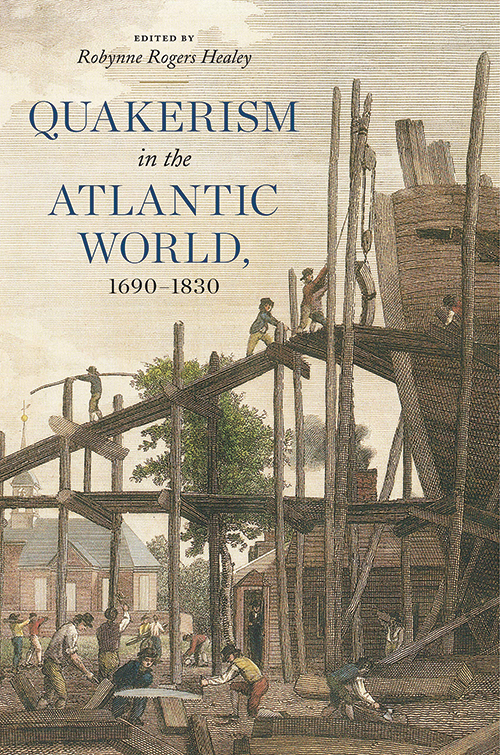
Quakerism in the Atlantic World, 1690–1830
Reviewed by Brian Drayton
November 1, 2021
Edited by Robynne Rogers Healey. The Pennsylvania State University Press, 2021. 288 pages. $89.95/hardcover; $39.99/eBook.
This is the third volume in the “New History of Quakerism.” It overlaps the previous volume, reaching back into the late 1600s, and concludes just after the Great Separation of North American Quakers in the early 1800s. During this time, a recognizable Quaker culture developed across the transatlantic world. This volume does not seek to portray large-scale trends in the form of a continuous narrative but rather is a series of “Quaker studies.” Editor Robynne Rogers Healey provides an introduction and conclusion that sketch in some contextual factors and chronologies. The book comprises three parts.
Part 1, “Unique Quaker Testimonies and Practices,” includes essays on practices like writing testimonies to the lives of departed Friends; the witness of equality and how it changed over time; the writing of books of discipline; and “methods” of worship, which includes the development of Quietism.
Part 2, “Tensions Between Quakerism in Community and Quakerism in the World,” has chapters that demonstrate ways that Quakerism came into tension with the dominant culture. For instance, the refusal to swear oaths was strange at that time. Quakers’ practice of conducting wedding ceremonies was not at first recognized as legitimate. At the same time, the popular image of Quakers remained positive due to Friends’ social justice work. Also examined is the inward-facing culture that developed among Quakers.
Part 3, “Expressions of Quakerism Around the Atlantic World,” describes, among other things, early dynamics that shaped the Quaker relationship with Native Americans in North America. Interestingly, the idea that Friends’ concepts of order did not project well onto those relationships is discussed, as is the inability of Friends to understand Native culture.
The third part has a lot of variety in its content. The disparate essays cover topics like comparative case studies showing how marriage practices and their roles in meeting life had differing impacts on two Canadian meetings and a fascinating view of one family enterprise in Wales that prospered with the early rise of the Industrial Revolution and collapsed in the 1840s.
All these are useful studies. However, this volume does not provide much detail about the Great Separation of 1827, or about the various social justice movements among Friends, or about Friends’ religious practices or theologies. Despite the intent to produce “a broadly accessible picture of Quakerism in the period,” the book definitely assumes that the reader is already widely read in Quaker history, and the endnotes are thick with all the references one might consult. I recommend that you first spend time with some “old histories.” (Books like Rufus Jones’s The Later Periods of Quakerism, Hugh Barbour and J. William Frost’s The Quakers, and John Punshon’s Portrait in Grey would be good places to start.) This volume could then provide additional insight with individual chapters on topics of interest. It has an index, which researchers will find useful.
Brian Drayton worships with Souhegan Preparative Meeting in southern New Hampshire. He blogs at amorvincat.wordpress.com.


